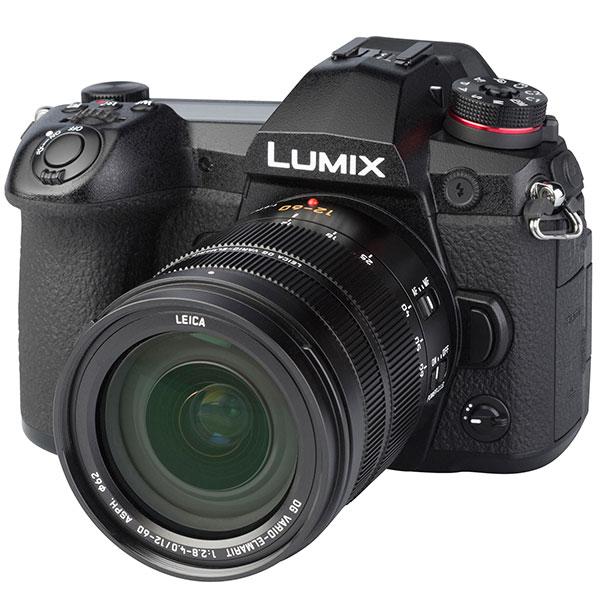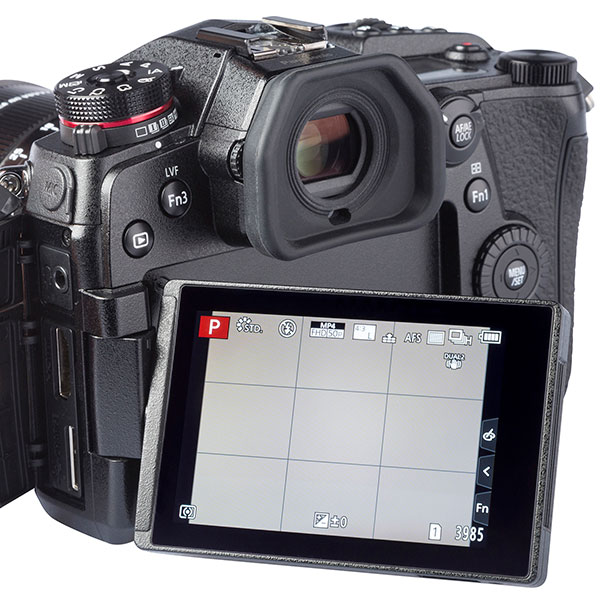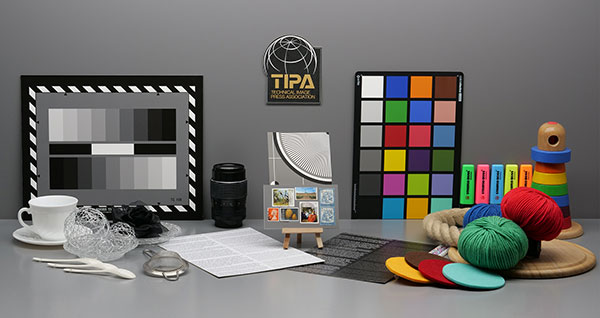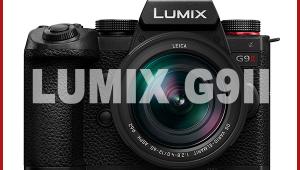Panasonic Lumix DC-G9 Mirrorless Camera Review


(Editor’s Note: This mirrorless camera review is based on test data and comments supplied by Image Engineering, Shutterbug’s new TIPA-affiliated testing lab. Known worldwide as a leader in the development of advanced testing procedures and manufacturer of ISO-standard testing equipment, Image Engineering is an independent testing lab that specializes in rigorous testing of products for the photo and imaging industries. Test comments are edited by George Schaub, a member of TIPA’s Technical Committee.)
All interchangeable lens cameras share common feature sets, with some offering higher sensitivity (ISO range), faster shutter speeds, or enhanced video capabilities. Aimed squarely at photo enthusiasts and advanced photographers who can appreciate and make use of its many creative imaging options, the Panasonic Lumix DC-G9 ($1,697, body only) stands out as a fast performer, with an astonishing framing rate and very fast autofocus acquisition time, plus many features and functions that will appeal to knowledgeable photographers who want to make use of cutting-edge processing and capture capabilities.
Let’s take a closer look at the Panasonic Lumix G9 in this review.
Features & Build
The Micro Four Thirds-based Panasonic Lumix G9 contains a 20.3MP Live MOS sensor and delivers many impressive features, including 20 frames per second (fps) stills using the mechanical shutter and an even more impressive 60 fps via the electronic shutter. An on-board image stabilization system can deliver up to 6.5 EV of shake reduction, plus there’s a new high-resolution mode that shifts the sensor to yield 80MP stills, created by merging eight images to a single image that, in our tests, produced excellent detail.
There are numerous bracketing options, including exposure, focus, and white balance: with aperture bracketing all apertures can be chosen, which allows the photographer to then work with focus stacking and even a “best-of-focus” selection, which Panasonic dubs “post focus” control.

The magnesium alloy body of the Panasonic G9 is well sealed to protect against inclement weather, plus there’s a fully articulating touchscreen display and a large EVF. While the still image capabilities are impressive, video features add to the camera’s allure: 4K video at up to 60p/150Mbps, with a high-speed mode that allows capture up to 180 fps in Full HD and 60 fps in 4K. The G9 can also deliver 6K or 4K stills, as well as many other unique and interesting capture and post-exposure processing modes.
Handling
All of this control comes with a fairly complex layout that in practice is easier than making settings with the “hold this button while changing settings with another dial” method found in other cameras. The Panasonic Lumix G9 boasts 14 buttons, five dials, a joystick, a selector wheel, and a function lever marked with one and two dots. Settings are primarily set with dials and buttons: only a few can be set through the quick menu.
The oversized program mode dial on the upper left of the Panasonic G9’s body can be protected from accidental change through use of the lock/unlock button in the middle of the dial. Other settings are changed by use of a press-adjust-relock method. The LCD display screen on the top of the body shows a useful overview and can be backlit. One note: we found the shutter release button to be a bit “soft” in that it sometimes actuated the shutter when we tried to set focus.
The Panasonic G9’s electronic viewfinder is bright and large, with a responsive eye sensor. The Live View button is on the left-hand side of the viewfinder and easy to manipulate. Panasonic describes both monitor and viewfinder as having views of “about 100%.” The monitor swivels out and has touchscreen capability, facilitating navigation of the main menu as well as the quick menu.

A Night mode is available that uses only red, which is very helpful in making adjustments and selections in low-light conditions: this is available when using the monitor or viewfinder. The quick menu includes nearly all settings and is easy to navigate using the two top dials. The main menu requires scrolling through the different tabs, which can be up to five pages long. However, the user can customize a “My Menu” tab.
Being “built for speed,” a fast burst mode in 6K or 4K size is designed to allow the user to later extract desired frames. Time-lapse photography is also possible. Some of the Panasonic G9’s burst shooting modes use the electronic shutter, and the saving process allows the user to have the camera adjust for any rolling shutter effect problems. The output is an MP4 and selected frames can be marked in-camera. The user can also save the entire set.
The G9 has built-in five-axis electronic stabilization that can work together with a suitable in-lens system. The system can deliver a very impressive 6.5 f/stop advantage. There are also some nice features for long-exposure creativity, such as a maximum shutter speed (excluding bulb) of 60 seconds. In addition, autofocus options include tracking and zone. The number of autofocus points is a respectable 225. Using manual focus triggers an enlargement of the center of the photo to assist focus in the viewfinder as well as when using the monitor. However, the enlarged area cannot be shifted around the frame from the center. And although a flash hot shoe and external jack are included, no flash is included or built in.

Connectivity is good, with USB Type 3, HDMI Type A, headphone and microphone jacks, along with a remote trigger jack. Most of the connection covers are rubber and attached to the body. Three major exceptions are the external flash jack cover, which is a small, unattached plastic screw cover, and two covers on the base of the camera—for a cable to the battery compartment, and an electronic connector plate for the battery grip connector, which have soft rubber covers. All three seem vulnerable to loss: the manual even reminds users to try to prevent children from swallowing the covers. The G9 has two SD card slots, both of which support high-speed UHS-II media.
Still Image Quality & Performance
Resolution: The resolution in images produced by the 20.3MP Panasonic Lumix G9 is decent, considering that many competitors have a good deal more megapixels in their sensors. At the lowest native ISO of 200, the G9 records 1,860 line pairs per picture height (96% of the theoretical maximum). At ISO 400, the resolution is similar, and subjective visual inspection of the test images captured at ISO 1600 appear to show them to be as high in resolution as images made at ISO 200. The resolution declines very slightly as ISO increases: at ISO 3200 and ISO 6400, 87% of the theoretical maximum resolution is recorded, and at the highest ISO available in this camera, ISO 25,600, it’s 76%.
Sharpness: Detail reproduction tests reveal a loss of the finest details at ISO 1600, at least when compared to those recorded at ISO 200: at ISO 6400 and higher, smoothing is very obvious. The G9 also produced artifacts at ISO 6400: 40.3% in high-contrast parts of the image scene and 52.8% in low-contrast areas. Sharpening is moderate at nearly all ISO settings.
Noise: In general, visual noise at 100% viewing is not very noticeable: noise is not apparent at ISO 200, and barely visible at ISO 400, although it becomes obvious at ISO 6400 and higher. Simulating a large-size print, the noise would be well below the threshold of being noticeable in images shot at ISOs between 200 and 1600, and hardly discernable at ISO 3200 and ISO 6400, and only in the darkest tones. The dynamic range exhibited by the G9 is good, with over 10 f/stops at many of the ISOs tested (10.6 at ISO 200, 10.1 at ISO 400, and 10.3 and 10.2 at ISOs 1600 and 3200, respectively) and below 10 stops at ISO 6400 and higher (ranging from 8.4 to 9.0).

Color: Color reproduction is good, albeit with seven colors showing strong deviation from the original color. Of these seven, six were bright reds, and one was a turquoise (cyan/blue) test swatch. The color fidelity, combined with the broad dynamic range and the high-resolution pixel-shift option, indicates that this camera is a good match for landscape and possibly architectural photography. The automatic white balance is adequate at most ISO speeds. It performs best at ISO 25,600 and ISO 1600. At ISO 200 and ISO 800, automatic white balance is good: the poorest performance of the automatic white balance is at ISO 6400.
Speed: The G9 has excellent speed results. It starts up in 0.8 seconds. The burst-shooting rate is amazing. Our tests confirm that the G9 shoots 60.0 fps in JPEG format, up to 50 images in a row. Burst shooting in Raw format is just as fast: 60.0 fps up to a total of 50. The G9 is described by the manufacturer as having the “world’s fastest autofocus,” claiming “0.04 second (approx.) lock focus.” The Image Engineering speed test protocol produced measurements of autofocus time in bright light a bit slower than claimed, 0.06 seconds for a total shooting time of 0.13 seconds. Autofocus in low light took longer, 0.12 seconds, for a total shooting time of 0.2 seconds.
Video Quality
The Panasonic Lumix G9 is described as being aimed more at still photographers, while its sister GH5 is aimed at those who prioritize video. (Meanwhile, the recently announced GH5S is designed for pro cinematographers who need that camera’s extreme low-light shooting capabilities.) Yet, the G9 offers a variety of filming options, both 4K and Full HD, and even 180 fps slow-motion recording. Images can be spliced into videos in-camera, either in the same order as shot or reverse order. The manufacturer states that video mode has an additional electronic image stabilizer that complements the usual in-body stabilizer (and in-lens for compatible lenses). The headphone and microphone jack are useful for enhanced sound recording. The range of native ISO in creative video mode is slightly smaller than for still photos, from 200 to 12,800.

Shooting tests revealed that even with “continuous autofocus” in video mode there is a noticeable lag before focus adjusts to a new scene. In addition, some options, such as digital panning, are set prior to shooting the video, which means one must predict the shot prior to the start of shooting.
Resolution in frames grabbed from videos shot at low ISOs was 1,050 lines per picture height, 97% of the theoretical maximum, with videos shot at high ISOs showing nearly the same resolution. Details were fairly well reproduced in video frames, with lower results in low-contrast scenes. In general, video frames showed greater sharpening than in stills and visual noise was moderate. Dynamic range in video is very good, 10.3 f/stops at low ISOs and 9.0 f/stops at higher ISOs. White balance is acceptable at nearly all ISO settings.
Conclusion
The Panasonic Lumix G9 is a unique camera that delivers all the features one could want in a state-of-the-art mirrorless camera, and then some. It delivers impressive speed in both autofocus acquisition time and especially in its framing rates for both JPEG and Raw images. If we were to sum up one keyword for this camera it would be “speedy.” There’s no question that the G9 is aimed at the enthusiast and expert photographer who can fully appreciate and take advantage of all the capture and post modes it offers. Some features and functions will be familiar to those who have worked with a recent digital camera; others will be a pleasant and creative surprise that may open the door to new ways of seeing and capturing images.
The Panasonic Lumix DC-G9 (body only) has a list price of $1,697. For more information, visit shop.panasonic.com.
Pros
+ A speedy performer: 60 fps in both JPEG and Raw format
+ Bright and large EVF; articulating and touchscreen LCD
+ Numerous creative options in both still and video recording
+ Capable of high-resolution recording up to 80MB stills
+ Impressive image stabilization stats
Cons
- Slightly “soft” shutter release
- No built-in or accessory flash included
- Connectivity covers could be more durable
- Log in or register to post comments

















































